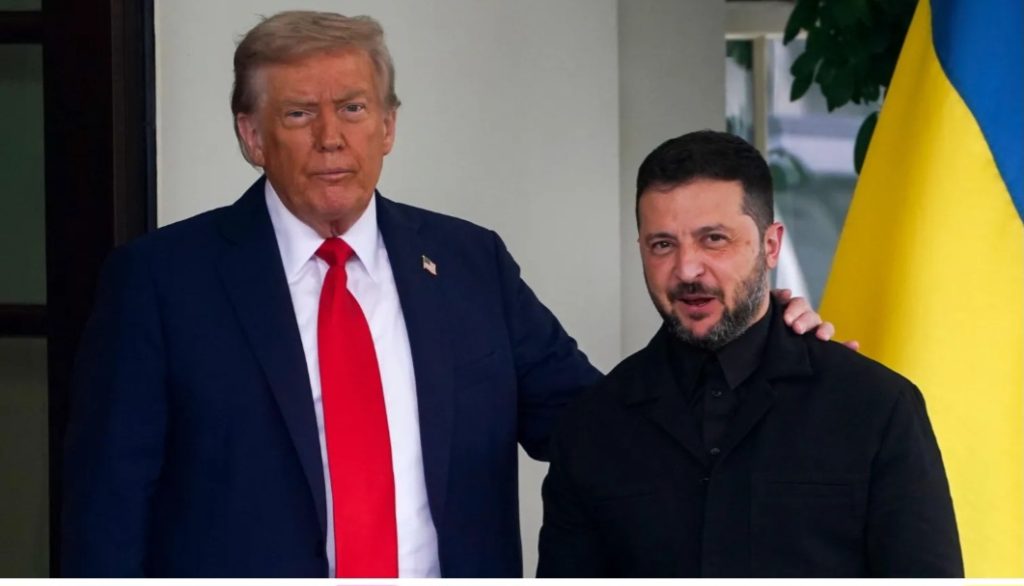
Esther Imonmion
Ukrainian President Volodymyr Zelensky will meet U.S. President Donald Trump at the White House on Friday, as Washington weighs whether to supply Ukraine with Tomahawk missiles capable of striking deep into Russian territory.
The meeting comes a day after Trump held what he called a “very productive” phone conversation with Russian President Vladimir Putin, during which the two leaders agreed to hold face-to-face talks in Hungary within the next two weeks.
Trump said “great progress” was made during the call — the first between both leaders since mid-August — and announced that high-level delegations from Washington and Moscow would meet next week, with Secretary of State Marco Rubio leading the U.S. team.
Writing on his Truth Social platform, Trump said he and Putin discussed “trade between Russia and the United States when the war with Ukraine is over,” adding that he would brief Zelensky on the conversation during their Friday meeting.
Zelensky, who arrived in Washington for his third visit to the U.S. since January, told reporters Moscow was “rushing to resume dialogue as soon as it hears about Tomahawks.” The Ukrainian leader has long urged Washington to provide long-range missiles, which have a range of up to 2,500 kilometers (1,500 miles).
Asked earlier this week if he would approve the missile transfer, Trump said: “We’ll see… I may.” But after his call with Putin, he appeared more cautious, saying the U.S. “can’t deplete” its missile stockpile because “we need them too.”
The planned Trump-Putin meeting in Budapest was confirmed by Hungarian Prime Minister Viktor Orban, who told state radio on Friday that he would also speak to the Russian president later in the day. “Since the EU is pro-war, it is logical that it will be left out of this peace process,” Orban said, describing the planned talks as “great news for the peace-loving people of the world.”
Hours before the Trump-Putin phone call, Russia launched one of its largest attacks of the year on Ukraine, firing 28 ballistic missiles and 320 drones, according to Ukraine’s ambassador to the U.S., Olga Stefanishyna. She said the strikes exposed Moscow’s “real attitude toward peace,” calling for tougher sanctions, reinforced air defenses, and the supply of long-range weapons.
Trump has taken a tougher line on Putin in recent months after an August summit in Alaska failed to yield progress toward a peace deal. Despite that, the U.S. president has continued to pursue direct engagement with Moscow, arguing that dialogue is the only way to end the conflict that began with Russia’s full-scale invasion of Ukraine in February 2022.
Relations between Trump and Zelensky — once strained — have improved markedly. In September, Trump said he believed Kyiv could “win all of Ukraine back in its original form,” a reversal from earlier remarks suggesting Ukraine should cede territory to Russia.
Meanwhile, India on Thursday disputed Trump’s claim that Prime Minister Narendra Modi had agreed to stop purchasing Russian oil. A spokesperson for India’s foreign ministry said he was “not aware of any conversation between the two leaders,” contradicting Trump’s statement that Modi had assured him oil purchases would cease “within a short period of time.”
The United States has continued to pressure India, China, and NATO allies to halt energy imports from Russia, a stance Zelensky has repeatedly supported.
